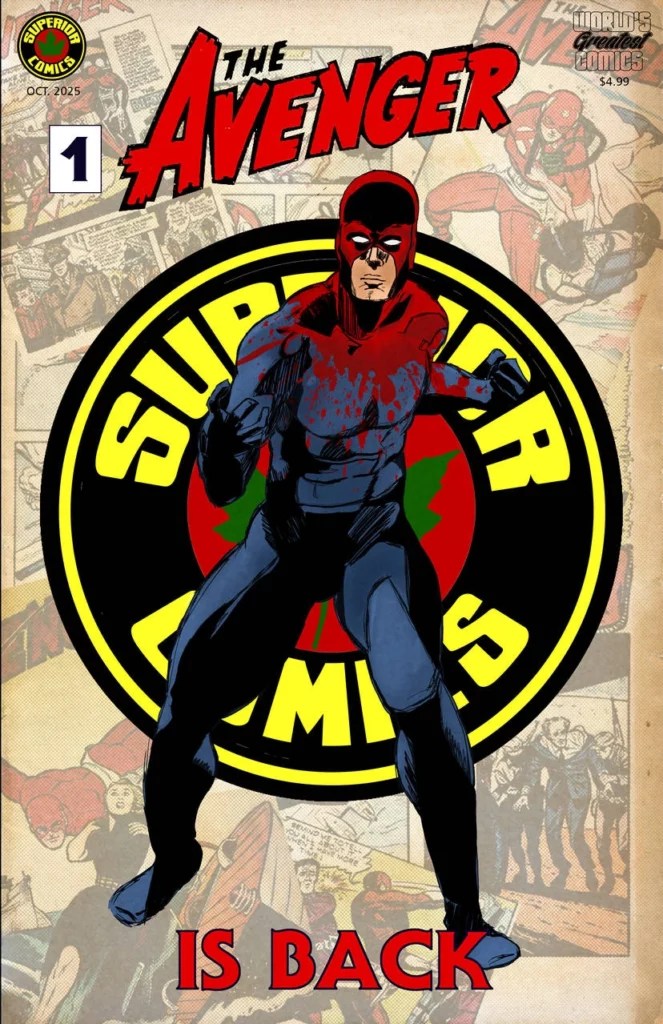
Essays, Writer Resources
Ever found a book that looks like a comic but tells a complete, well-structured story? Congratulations, it’s a graphic novel.

Ever found a book that looks like a comic but tells a complete, well-structured story? Congratulations, it’s a graphic novel.
Over the past few decades, graphic novels have moved from the “kids’ section” to the main shelves of libraries and schools, and even won prestigious literary awards. Maus by Art Spiegelman broke barriers and proved that these illustrations can be just as deep and powerful as any traditional novel.
Let’s explore what a graphic novel is and why it stands out from a comic book. Although the terms are often used interchangeably, this distinction helps reveal what makes graphic novels unique and worth exploring.

Simply put, a graphic novel is a book that uses art and illustrations to tell a complex story. While similar to comic books, they offer the depth of a traditional novel, blending different types of graphic art, featuring well-developed plots, characters, and themes, making them more complex than a typical serialized comic.
This definition does not fully capture how graphic novels have expanded to include biographies, historical stories, classic novel retellings, and science information.
Graphic novels are a format, not a genre, and can be fiction, non-fiction, history, fantasy, or more. With this in mind, what is the main difference between a graphic novel and a comic book?

There is no exact consensus on ‘graphic novel’ and ‘comic book.’ Comic books are shorter, periodic installments, while graphic novels are complete, book-length stories told through illustrated panels. Both use images and text, but may be defined differently by authors.
Comic books are short publications released in a series, similar to TV episodes, which often need to be read in order to grasp the larger storyline. Graphic novels, however, are longer, stand-alone books (though some can have sequels), generally structured to provide a complete narrative in one volume, much like a movie does.
Comics are best known for superhero stories, but graphic novels cover a wide range of genres, including fantasy, mystery, drama, sci-fi, memoir, and history, showcasing a more diverse array of themes and styles.
Comic books usually feature advertisements, breaking up the story for commercial breaks. Graphic novels, in contrast, rarely contain ads, allowing for a more immersive reading experience.
Telling stories through images is not new. Humans have combined pictures and words for centuries; even cavemen used symbols. Pinpointing the start of graphic novels is as hard as deciding who invented storytelling; it depends on whom you ask.
The term “graphic novel” was first used in 1964 by fan historian Richard Kyle to describe book-form comics in a comics fanzine called CAPA-Alpha. By the 1970s, the phrase gained popularity, and by the 1980s, works like Maus by Art Spiegelman made it mainstream. In 2001, the publishing industry made it official when bookstores began using it as a separate category.
Book-length comics predate the phrase “graphic novel.” In 1827, Rodolphe Töpffer created one of the first, later followed by The Yellow Kid in 1897, which collected strips in book form. In 1978, Will Eisner’s A Contract with God shaped the modern graphic novel format for later works like The Watchmen and Maus.
One cool aspect of graphic novels is their ability to tell any kind of story. These works span romance, thriller, memoirs, comedy, and more. As with traditional novels, there are numerous ways to categorize graphic novels.
Because it’s a format and not a genre, graphic novels are often broken down into five major categories:

In Japan, “manga” means comics regardless of origin and has become a global phenomenon. Manga is read top to bottom, right to left, and spans every genre: fantasy, romance, comedy, sci-fi, drama, supernatural, and more.
A popular manga example is ONE PIECE by Oda Eiichiro. It follows a boy made of rubber who sails with pirates in search of the legendary ONE PIECE treasure.

Ask, “What is a graphic novel?” and most people think of superhero stories; villains, vigilantes, and explosive action, thanks to Marvel, DC, and others. Understandably so, since superhero stories dominated early comics.
In the same vein, not all graphic novels are about superheroes. This broad category includes any fictional story told with sequential art, from romance to mystery, drama, or fantasy; anything without superpowers.


These are autobiographical stories from the author’s perspective. Graphic memoirs offer raw thoughts and honest experiences, like a published diary. An example: You Can Never Die by Harry Bliss, a reflection on his life through the memory of his dog Penny.

Graphic novels are not all fiction. They can overlap with personal narratives, using the author’s experiences to explore bigger themes or social issues, or cover topics like history, science, and politics with engaging visuals.
Now that we’ve defined graphic novels, let’s look at some examples.

Maus is often called the greatest graphic novel ever. It tells Spiegelman’s father’s Holocaust story, using mice for Jews and cats for Nazis. The book weaves his father’s memories with Spiegelman’s reflections on their relationship, showing trauma’s generational impact.

Watchmen by Alan Moore and Dave Gibbons is a New York Times bestseller and Hugo Award winner. Set in a dystopian 1980s America, superheroes have altered history: the U.S. won Vietnam, Nixon is still president, and the Cold War continues. A murder mystery unfolds into a conspiracy that pushes retired heroes to question the line between good and evil.
Originally released as a 12-issue series, The Watchmen was later collected into one volume. Its fresh perspective on superheroes transformed how the world viewed comic books, securing its status as one of the most influential graphic novels.

Will Eisner popularized the term “graphic novel.” A pioneer in American comics, the prestigious Eisner Awards are named after him. This book is a collection of four semi-autobiographical stories set in a Jewish Bronx tenement during the Great Depression.
Eisner addresses themes like God and free will through Frimme Hersh’s struggles with faith and loss, along with other characters, such as Eddie, a homeless singer, and Mr. Scruggs, a struggling superintendent.

Jane Eyre gets a fresh take in this Manga Classics adaptation. The story blends Brontë’s tale with manga art. It follows Jane, an orphan facing cruelty and neglect who is sent to a harsh charity school but finds education, justice, and independence.
As a young woman, she takes a job as a governess at Thornfield Hall, where she meets the enigmatic Edward Rochester. Despite his moody and mysterious nature, Jane grows close to him but their budding romance is threatened by a dark secret hidden within the walls of Thornfield. When the truth is revealed, Jane must make difficult choices about love, morality, and freedom.
This illustrated adaptation makes a classic story feel brand new for modern readers.

Part graphic novel and part memoir, Wake by Rebecca Hall is a powerful and imaginative work that uncovers the long-erased stories of women who led slave revolts. For centuries, the history of slave uprisings has overlooked the role of enslaved women, but Wake sets the record straight.
Historian Rebecca Hall, a granddaughter of slaves, embarks on a personal journey to uncover these hidden narratives. She digs through old court records, ship logs, letters, and even forensic evidence to reconstruct the likely pasts of women like Adono and Alele, rebels who fought for their freedom during the Middle Passage, as well as women who led uprisings in Colonial New York. Alongside this historical detective work, Hall weaves in her own story: her experiences as a lawyer, a historian, and a Black woman living in the shadow of slavery’s legacy.
It stands alongside classics like Persepolis and Maus as a groundbreaking contribution to the graphic novel genre.
Contrary to popular belief, reading books with pictures in them isn’t something we have to stop after age ten. In fact, many teenagers and adults have discovered they like graphic novels; they are more than just illustrated books.
One of the strengths of the graphic novel today lies in its ability as a medium to tell sensitive or difficult stories in a way that is both accessible and moving. The number of stories on different subjects and the variety of art styles basically mean that there is a graphic novel out there for everyone.
So what are some benefits of graphic novels?

Children love graphic novels. Research indicates that when schools add graphic novels to their libraries, student interest in reading significantly increases. One report showed an 82% rise in library use after comics were introduced. The reason is simple: when students have autonomy over their reading choices, they are more likely to read consistently.

Not every child is eager to pick up a book. Some kids have the skills but just don’t want to read, maybe because they think books are “boring” . Graphic novels flip that idea on its head. They also make great entry points for tricky subjects like history, science, and even classic literature, by presenting them in a fresh and engaging way.
In short, graphic novels make reading more inclusive and imaginative.
So, what is a graphic novel? Graphic novels are a dynamic form of storytelling that spans genres as they pack a literary punch with a visual pop. There was a time when storytelling through pictures was not considered a part of “serious” academic study. That has changed. Today, graphic novels have proven themselves as a powerful storytelling tool that blends art and narrative in ways that words alone can’t always achieve.
They’re no longer limited to superhero tales (though we love those too); they are now about everything. Graphic novels prove that stories don’t just live in paragraphs; they leap off the page in panels, colors, and emotions, making reading an experience that’s as visual as it is unforgettable.
So the next time someone asks, “What is a graphic novel?”, do not hesitate to provide a full thesis.